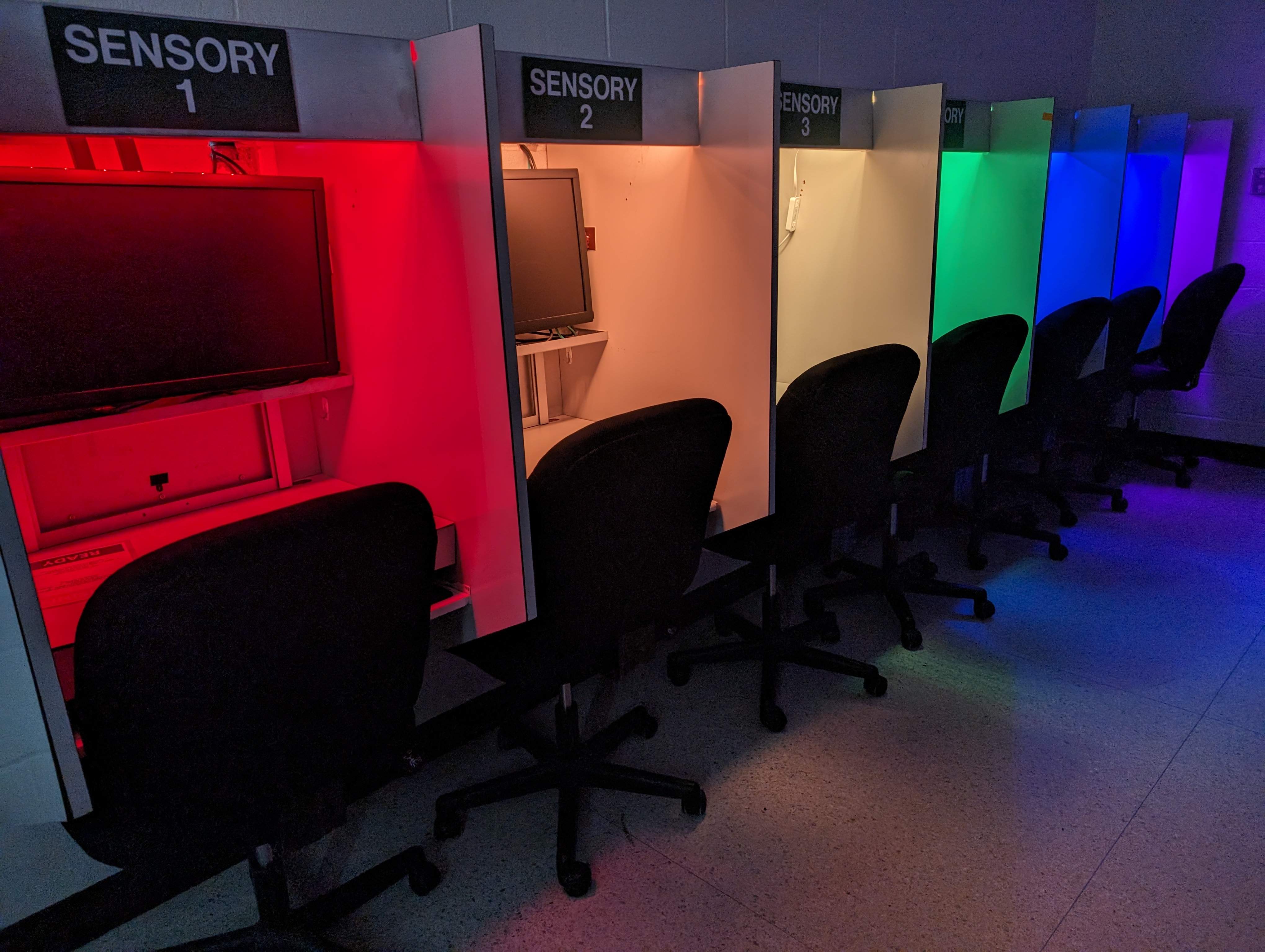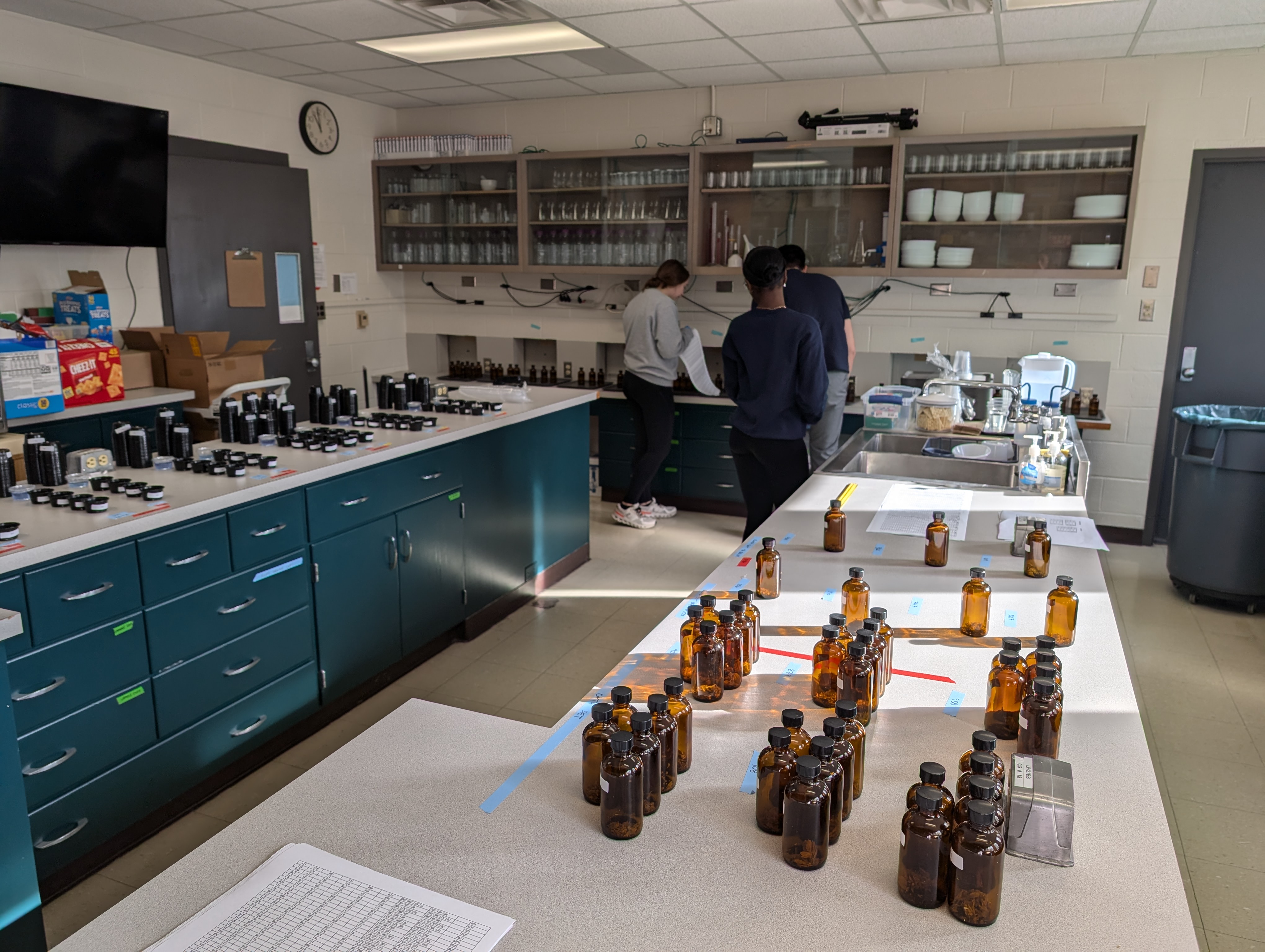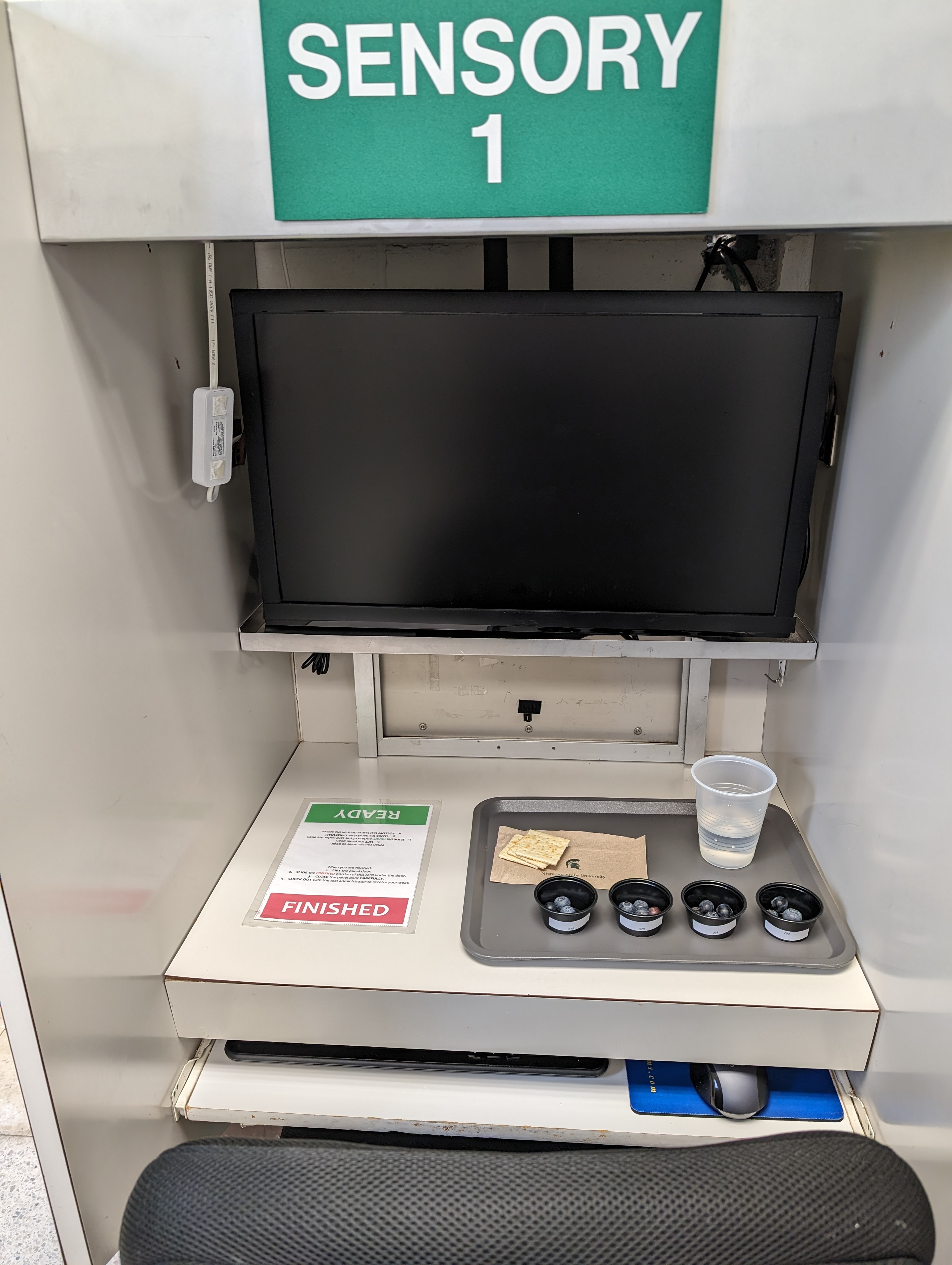Food Sensory Laboratory
MSU Sensory Evaluation Center
The MSU Sensory Evaluation Center is an active hub with a mission to support cutting-edge research, industry collaborations, entrepreneurship, teaching, and outreach.
The center is led by Assistant Professor Emily Mayhew with support from Laboratory Manager Hannah Mulheron. Located in the G.M. Trout FSHN Building in suite 100-102, the center is easily accessible to other research spaces and processing facilities.

Capabilities
The Sensory Evaluation Center is fully equipped to conduct all types of sensory and consumer research, including descriptive analysis and rapid descriptive methods, discrimination testing, psychophysical testing, quantitative consumer testing, and qualitative consumer research.
Sensory and Consumer Research Service Center
The center supports both grant- and industry-funded projects and operates a fee-for-service sensory and consumer research program. Approved rates for standard tests can be viewed here.
For Michigan-based food entrepreneurs, the lab also offers a low-cost, student-led sensory and consumer research program during the Fall semester. Prospective clients should contact the lab for more information on eligibility.
Research Activities
The Sensory Evaluation Center supports research projects that span the range from basic research on human smell and flavor perception to applied projects that aim to improve the sensory quality of foods and crops. Recent collaborations include joint projects with researchers in horticulture, plant sciences, chemical engineering, and neuroscience. New collaborations are welcome.
Facilities
The Sensory Evaluation Center includes a wet laboratory and preparation kitchen area, a sensory testing area, and a panelist training area. More information about these spaces follow.
Wet Lab and Kitchen for Sample Preparation


In addition, the sample preparation area is used to prepare other food-grade stimuli and conduct basic instrumental measurements. It is equipped with lab benches, analytical balances, chemical glassware, micropipettes, Konica color reader, etc.
Sensory Testing Area

The sensory testing area includes 7 tech-equipped sensory booths that can be used for descriptive, discrimination, and quantitative consumer test methodologies. Samples can be served via pass-through doors connecting each booth to the sample preparation lab space. Each booth has LED color strip lighting that can be controlled individually to customize the lighting. RedJade sensory software is used to build and deploy sensory surveys to booth computers for digital data collection. The testing area is designed to maintain positive air pressure.
Panelist Training and Qualitative Research Area
Adjacent to the testing area, there is a separate area for panelist training that includes a conference table with seating for up to 10 panelists and a dry erase board. This space can also be used for qualitative research methods such as conducting focus groups.

Interested in Participating?
We're frequently recruiting panelists for paid sensory studies and welcome new participants! Interested individuals can request to be added to our listserv to be informed of upcoming studies by completing this form.
Contact
Emily Mayhew, Assistant Professor
G.M Trout Food Science and Human Nutrition Building
469 Wilson Rd, Rm 100-102
East Lansing, MI 48824
Phone: 517-884-0046
mayhewem@msu.edu (Emily Mayhew)
sensory@msu.edu (Lab Manager)



 Print
Print Email
Email